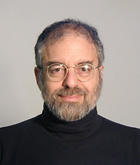Aaron Marcus Seminar in Moscow
 The man in the photo on the left made a tour last week on the route Kiev — St. Petersburg — Moscow. His name is Aaron Marcus, his roots, which can be seen from the sly burning look, go to Odessa, and he knows more than many others about designing interfaces for the Web and software. But let's talk about everything in order.
The man in the photo on the left made a tour last week on the route Kiev — St. Petersburg — Moscow. His name is Aaron Marcus, his roots, which can be seen from the sly burning look, go to Odessa, and he knows more than many others about designing interfaces for the Web and software. But let's talk about everything in order.Aaron Marcus , the world's first professional graphic designer of computer interfaces, the author of several books and dozens of studies on the theory of usability (including for DARPA ), the head and founder of AM + A , was invited to conduct training seminars on user-friendly interfaces ( UOI , HCI ) in the three capitals training center edu) itonline . I was able to attend the second day of the seminar in Moscow on February 22, where it was mainly about the features of cross-cultural interactions and their influence on the development of interfaces.
For skeptics from the very beginning it is worth noting that Marcus led a lecture with a deep look at cultural studies and ethnography, with a horned cap on his head (photos will be tomorrow, stay tuned!). But this is not just shocking. This is a cultural test, the test of tolerance and the ability to focus on the main thing, without paying much attention to external strangeness. In general, the test audience of the seminar was passed.
But then we give skeptics grounds for suspicion. During the lunch break (by the way, the organization at the seminar, which was held in the well-equipped conference hall of the InfoSpace , was wonderful), participants were told at the tables that the many-hour lecture on the cultural features of the peoples of the world was somehow very far from everyday web practice. -designers. There were even opinions-revelations: they say, all this event is needed only to create a database of the best usability specialists in the CIS and collect their feedback on the sponsor - Microsoft with its Expression Studio software package.
')
At another table, however, Marcus’s appeal to ethnography was called a sign of a very deep, thoughtful approach to the task, with which, in general, all those present agreed.
Of course, within the framework of one post it is impossible to consider all the interesting moments of a 16-hour seminar. We will cover only the questions of the audience and the answers of Aaron to them. Perhaps the most popular was the question of why the site of Marcus, which has been advising the world's largest IT companies for 25 years, looks so awful. The answer was expect: "shoemaker without shoes." Despite the fact that for 5 years now we have been developing a new modern version of the site, made according to all the methods that the company advises its customers, there is no end in this work.
The second question concerned a very important problem for all professionals: the calculation of return on investment ( ROI ) in usability. How to calculate what material benefits each ruble will bring, invested in improving the interface of an online store or a text editor, so that the customer is sure that the money will be spent not in vain. Aaron, who devoted a lot of time to this topic, suddenly said that there are no open calculation methods for today, and no one will talk about closed methods yet. However, in the materials for the seminar in abundance are examples of the most fantastic results of work on usability, up to thousands of saved dollars for each invested.
Are there any universal programs for creating excellent interfaces, all work with which consists in the substitution of parameters of a specific order? The answer to this question, which immediately reminded everyone of the legendary, now lost, button “Make hmm ... beautiful” in Photoshop, also surprised. Markus, as opposed to most other prominent usability experts, expressed the opinion that such a program would be established within the next 5 years.
I must say that the impressions of the seminar left the most positive. Listening to really good English speech, which can only be learned by spending a few dozen lectures in many different countries of the world, is in itself great. And each participant has brought so much food for himself that it is unlikely that anyone regretted the money spent. In the near future, the center edu) itonline is going to invite Scott Berkun to conduct such seminars (the book “The Art of Project Management”), Edward Yordon (“The Kamikaze Path or how to survive in hopeless projects”, St. Petersburg on April 21st and Moscow on April 23) and Jacob Nielsen, who needs no introduction.
Source: https://habr.com/ru/post/20844/
All Articles